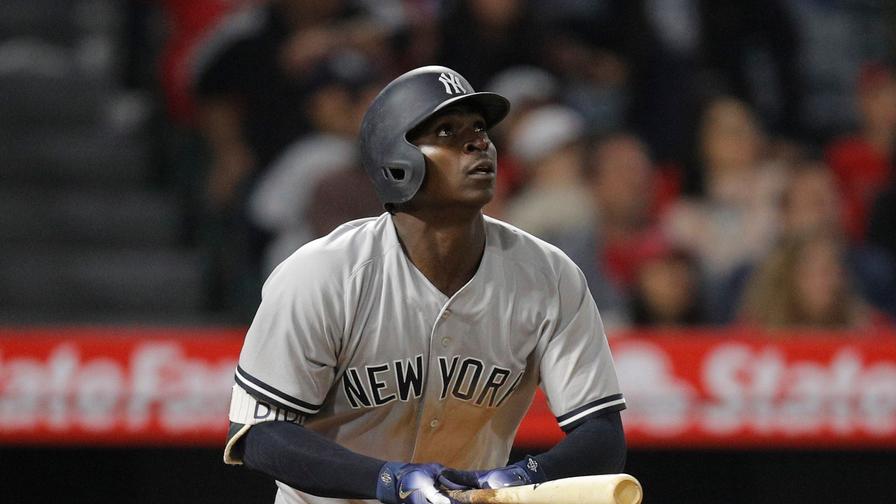The best player in baseball through the early portion of the 2018 season has not been one your typical suspects -- it's been Didi Gregorius.
His 230 wRC+ leads the league, as does his 2.4 fWAR. He's been an incredible player, particularly with the bat, and has been an absolutely steal for fantasy owners who nabbed him.
While Gregorius' offensive boon has been great so far, it is important to see how sustainable any of this is moving forward. Let's do just that.
Some Positive Trends
While he is unlikely to keep up this ridiculous pace (more on that later), there are some positive trends that show 2018 could be a career season for Gregorius, even if he regresses from his current pace.
| Year | Slugging Percentage | ISO | wOBA | Hard-Hit Rate |
|---|---|---|---|---|
| Career | .428 | .158 | .322 | 24.3% |
| 2018 | .828 | .460 | .515 | 40.0% |
While his slugging percentage and ISO have boomed to unsustainable heights, his hard-hit rate has rose alongside them. That is an incredibly important to Gregorius, especially when looking at his past hard-hit rates. He has been incredibly consistent in the regard, wavering between a 23.0% and 24.5% hard-hit rate in every season of his career, with his 27.9% mark in 2014 being the lone exception (and a career high).
His rise in hard-hit rate this season helps raise his whole profile. It makes his uptick in BABIP more believable (.314 this season, .289 for his career), and it makes the power surge more believable, as well. As does his fly-ball rate. He posted a career-best 43.8% fly-ball rate a year ago, which helped him jack 25 bombs, also a career high. This year, his fly-ball rate is up to 51.3%, the eighth-highest mark among qualified hitters.
Another positive trend for Gregorius is his plate discipline. He posted walk rates of 5.7%, 3.2% and 4.4% in the last three seasons, but he has been much more selective in 2018. His walk rate sits at 15.6%, and his strikeout rate has dropped to 10.1%, a career-best clip. He's managed to trim down on swinging strikes (8.9% swinging-strike rate, his career number is 10.3%), and he's been better about not chasing balls out of the zone (29.5% out-of-zone swing rate, down from a 36.6% career number).
His newfound ability to work counts will not only raise his on-base percentage, but it also goes a long way toward ensuring that he is swinging at better pitches. On top of that, he is hitting the ball significantly harder than ever. It is a perfect combination for a career year.
Assured Regression
Regardless of how good Gregorius' underlying numbers are, he is going to regress.
Since 1990, only seven times has a player posted a single-season wRC+ of 200 or higher -- four of those belonging to Barry Bonds, the other three came from Jeff Bagwell, Frank Thomas, and Mark McGwire. In just two of those seasons did the guy have a slugging percentage of .800 or higher. Needless to say, it is unlikely for Gregorius to keep up his 230 wRC+, .828 slugging percentage pace.
The biggest red flag in terms of regression may be his home-run-per-fly-ball rate. Right now it sits at 25.0%, meaning exactly one-fourth of Gregorius' fly balls are leaving the yard. That kind of rate is typically reserved for the elite-level sluggers, and it currently ranks 12th among qualified hitters. Just 10 hitters had a homer-per-fly-ball rate of more than 25.0% a year ago.
Gregorius is undoubtedly going to fall back down to earth, at least a little bit. However, his underlying numbers suggest that this can be a career year at the plate for him regardless of the impending regression. Hitting in the middle of the loaded New York Yankees' lineup, Gregoriushe should see plenty of RBI and run-scoring opportunities, and the hitter-friendly confines of Yankee Stadium don't hurt things one bit.
While selling-high is definitely a possibility, especially if you can land a massive haul from an owner who desperately covets Gregorius, it would not be a surprise if he ends up one as one of the better fantasy shortstops in 2018.
